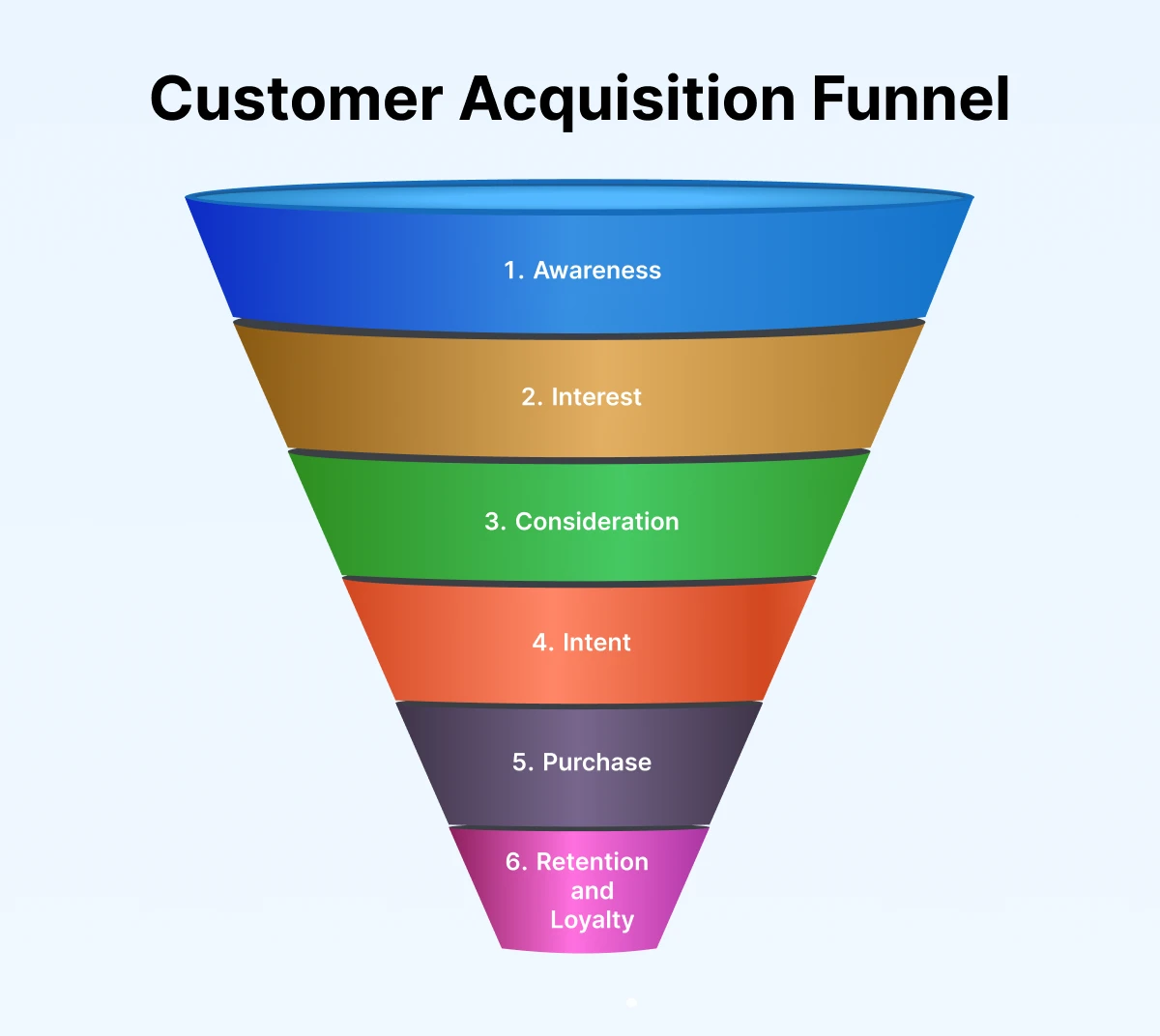Uncovering Secrets: Hookup Detectives
Explore the world of modern relationships and dating with insights from our hookup detectives.
Player Acquisition Funnels: Where Chasing Players Meets Strategic Mastery
Unlock the secrets of player acquisition! Explore strategies that blend ambition with tactical expertise for unstoppable growth.
Understanding the Player Acquisition Funnel: Key Stages and Strategies
Understanding the Player Acquisition Funnel is essential for game developers and marketers looking to effectively attract and retain players. This funnel comprises several key stages that outline the journey a potential player takes from first awareness of a game to active engagement. The initial stage, Awareness, focuses on generating interest through promotional efforts, ads, and social media campaigns. Once players are aware of a game, they move into the Consideration stage, where they evaluate its appeal based on reviews, gameplay trailers, and community feedback.
After considering the game, players typically enter the Conversion stage, where they make the decision to download or purchase the game. Strategies for optimizing this stage include offering free trials or limited-time discounts to entice players. Once players have engaged with the game, it's crucial to focus on the Retention stage, where ongoing updates, engaging content, and community-building activities maintain player interest. By understanding and implementing strategies across each stage of the Player Acquisition Funnel, developers can increase their chances of building a loyal player base.

Counter-Strike is a popular tactical first-person shooter game that emphasizes team-based gameplay and strategic planning. Players join either the Terrorist or Counter-Terrorist team, engaging in various missions such as bomb defusal or hostage rescue. To enhance your gaming experience, you can check out the shuffle promo code for potential rewards and bonuses.
5 Common Mistakes in Player Acquisition and How to Avoid Them
Player acquisition is a crucial aspect of any gaming business, and making common mistakes can significantly impact your overall success. One of the biggest errors is failing to understand your target audience. Without proper market research, you may end up attracting the wrong players or spending resources on channels that don't yield results. To avoid this mistake, invest time in analyzing player demographics, preferences, and behaviors. Utilize surveys, social media feedback, and analytics tools to gain insights that will inform your acquisition strategies.
Another frequent pitfall is neglecting the onboarding process. If new players struggle to navigate the game or feel overwhelmed, they're likely to abandon it quickly. Focus on creating an engaging and intuitive onboarding experience that highlights key features and encourages exploration. Additionally, effective use of in-game rewards during onboarding can significantly boost retention rates. Remember, first impressions matter, so ensuring players feel welcome and supported can make all the difference in retaining them long-term.
How to Measure the Success of Your Player Acquisition Funnel
Measuring the success of your player acquisition funnel is crucial for understanding how effectively you are attracting and converting gamers into loyal players. Start by identifying key performance indicators (KPIs) that align with your goals. These could include metrics such as conversion rates, the cost per acquisition (CPA), and player retention rates. By analyzing these metrics, you can gain insights into which stages of your funnel are performing well and which need improvement. For example, if you notice a high drop-off rate during the onboarding process, it may be time to revisit your user experience and make necessary adjustments.
Next, consider utilizing tools like Google Analytics or funnel tracking software to monitor the behavior of users as they move through your acquisition funnel. Create a clear visualization of the journey from initial awareness to active engagement. Tracking user interactions can reveal valuable data, such as which marketing channels are most effective in driving quality traffic. To create a comprehensive strategy, assess the overall cost-effectiveness of each stage and adjust your campaigns accordingly to optimize your player acquisition funnel for maximum engagement and growth.